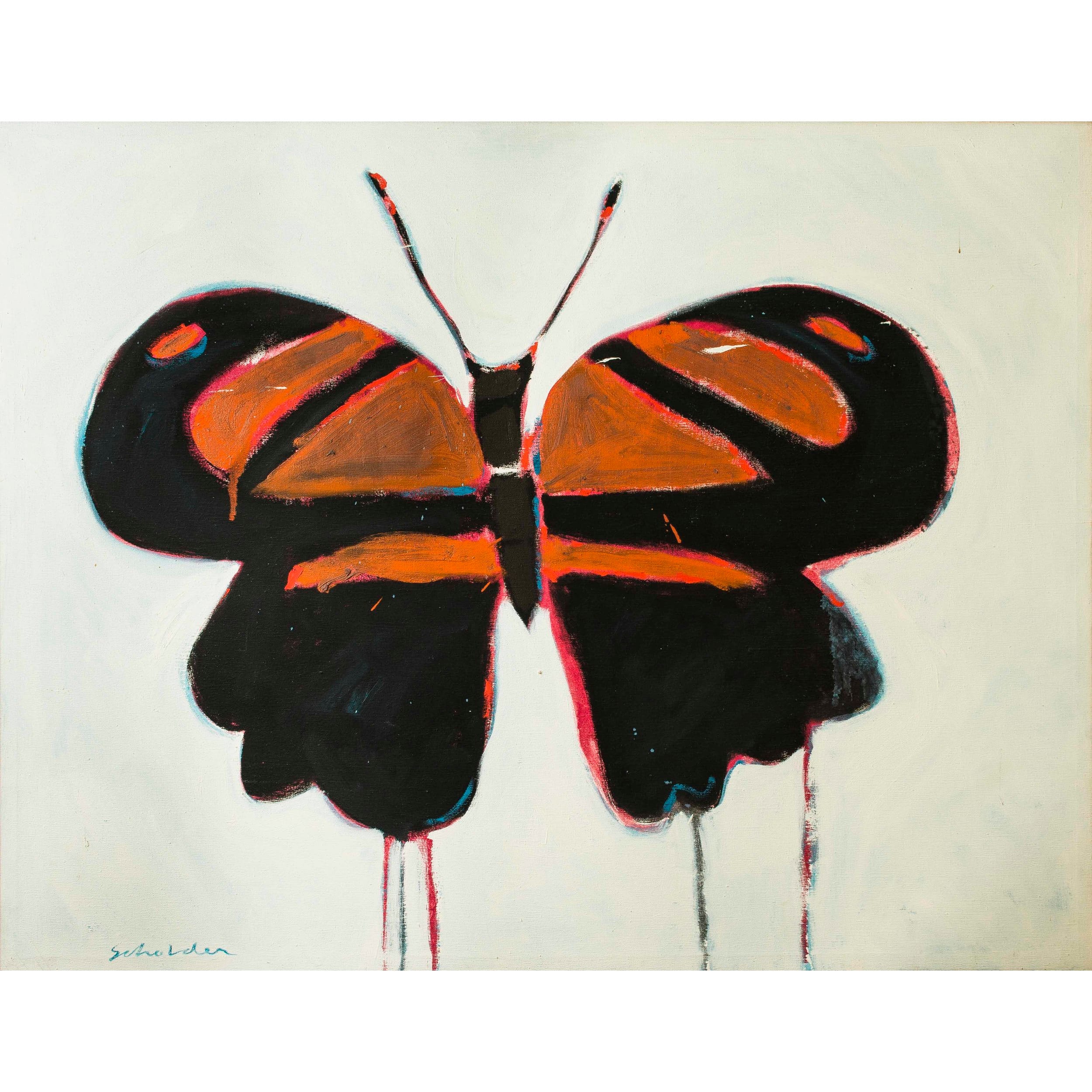The Revolutionary Art of Fritz Scholder
Fritz Scholder (1937-2005), an enrolled member of the La Jolla Band of Luiseno Indians, irrevocably transformed the landscape of Native American art. His vibrant and provocative works challenged prevailing stereotypes, sparking crucial conversations about identity and representation. Born in Breckenridge, Minnesota, his journey began with a high school art teacher in Pierre, South Dakota, who first nurtured his artistic talent. This early influence laid the groundwork for his later explorations at Sacramento State University under the mentorship of Wayne Thiebaud, known for his bold depictions of everyday objects. He further honed his skills studying with Tarmo Pasto and Raymond Witt, and participating in the 1961 Rockefeller Indian Art Project at the University of Arizona. These diverse experiences likely contributed to the development of Scholder’s unique artistic voice.
A Fusion of Influences: Shaping a Unique Style
Scholder’s artistic development was a confluence of powerful influences. The impact of Oscar Howe, a celebrated Sioux artist, probably ignited a spark in the young Scholder, suggesting an early fascination with challenging artistic conventions. Thiebaud’s influence is perhaps more subtle, but it can be seen in Scholder’s vibrant color palettes and dynamic compositions. He also drew inspiration from artists like Lloyd Kiva New and Charles Loloma, weaving their diverse styles into his own artistic tapestry. This blend of traditional and modern influences allowed him to create a style that was both deeply personal and undeniably groundbreaking.
Confronting Stereotypes: The “Indian” Series
In the 1960s, Scholder created his most controversial and arguably most impactful body of work: the “Indian” series. This series directly confronted the romanticized and often stereotypical portrayals of Indigenous people prevalent in art at the time. He depicted Native Americans in ways that challenged conventional narratives, sparking both acclaim and outrage. This bold approach ignited a much-needed dialogue about representation and the complexities of Native American identity in the modern world. The “Indian” series became a lightning rod, forcing viewers to confront uncomfortable truths and reconsider their own perceptions.
An Evolving Artistic Vision
Scholder’s artistic journey was marked by a constant evolution. While he initially resisted depicting Native American subjects, fearing cliché, a pivotal moment at the Institute of American Indian Arts in 1967 changed his trajectory. He began to embrace his heritage, incorporating his personal experiences and perspectives into his increasingly complex works. This shift is evident in his transition from representational art to more abstract forms, reflecting his ongoing exploration of identity, culture, and the human condition. His later works often featured self-portraits and delved further into abstraction, suggesting a deeper introspection and a desire to control his own narrative. He even established Apocrypha, a private press, further cementing his influence and leaving an enduring mark on the art world.
Legacy of Innovation and Inspiration
Scholder’s legacy extends far beyond his individual artistic achievements. He opened doors for countless Indigenous artists, empowering them to break free from traditional expectations and tell their own stories. His work continues to resonate today, provoking thought and inspiring dialogue about cultural representation. He received numerous accolades throughout his career, including a major retrospective at the Tucson Museum of Art in 1981 and posthumous induction into the California Hall of Fame in 2009. These honors solidify his position as a leading figure in American art. While we may never fully grasp the complexities of his art, it is this very ambiguity that continues to captivate and challenge us. Scholder’s work encourages us to question, to explore, and to engage in the ongoing evolution of Native American art and identity.
What is Fritz Scholder Known For?
Fritz Scholder’s art resonates because it grapples with the multifaceted nature of Native American identity in the modern world. He moved beyond mere aesthetics, exploring the complexities of being a Native American artist at a time when preconceived notions about Indigenous art and culture were deeply entrenched. His pushback against these stereotypes lies at the heart of his enduring significance. What makes Scholder’s story particularly compelling is his initial resistance to embracing his heritage in his art. This internal struggle adds another layer of depth to his work, inviting us to consider the personal journey that informed his artistic choices.
Scholder’s eventual embrace of his Native American roots was anything but conventional. He defied expectations, rejecting the romanticized depictions common in his time. Instead, he forged a new path, fusing elements of pop art’s vibrant colors and bold lines with the emotional depth of abstract expressionism. This innovative blend resulted in a distinct style that became his signature. The resulting “Indian” series was met with mixed reactions, ranging from outrage to profound appreciation. Some viewed it as disrespectful, while others recognized it as a powerful statement about the realities of navigating a world often marked by misunderstanding and prejudice.
Scholder’s creative exploration extended beyond painting. His experimentation with monotypes, lithographs, and sculptures suggests a restless artistic spirit, constantly seeking new avenues for expression. Each medium likely offered him unique possibilities for conveying his ideas and emotions. His time teaching at the Institute of American Indian Arts in Santa Fe likely played a significant role in shaping his artistic language. Being immersed in a community of Native American artists and thinkers probably provided him with new perspectives on his own identity. While the precise influences on his work remain open to interpretation, it’s clear that Scholder’s art has had a lasting impact. Many believe his work helped pave the way for other Native American artists to explore new modes of expression, challenging conventions and embracing individuality. His work earned critical acclaim and numerous awards during his lifetime, and its influence continues to shape contemporary art. The enduring power of Scholder’s art likely lies in its ability to spark dialogue and encourage ongoing exploration of Native American art and identity.
Read more about the Douglas TBD Devastator used by the U.S Navy from 1935 to 1942. (This link seems out of place in this context and should probably be removed or placed in a more relevant article.)
- SYBAU See You Baby Meaning: Gen Z Slang Evolves - July 1, 2025
- Unlock Your Inner Youth: Lifestyle Secrets for a Vibrant Life - July 1, 2025
- Decode SYBAU Meaning: Gen Z Slang Explained - July 1, 2025







1 thought on “Fritz Scholder: Defying Expectations and Defining Native American Art”
Comments are closed.